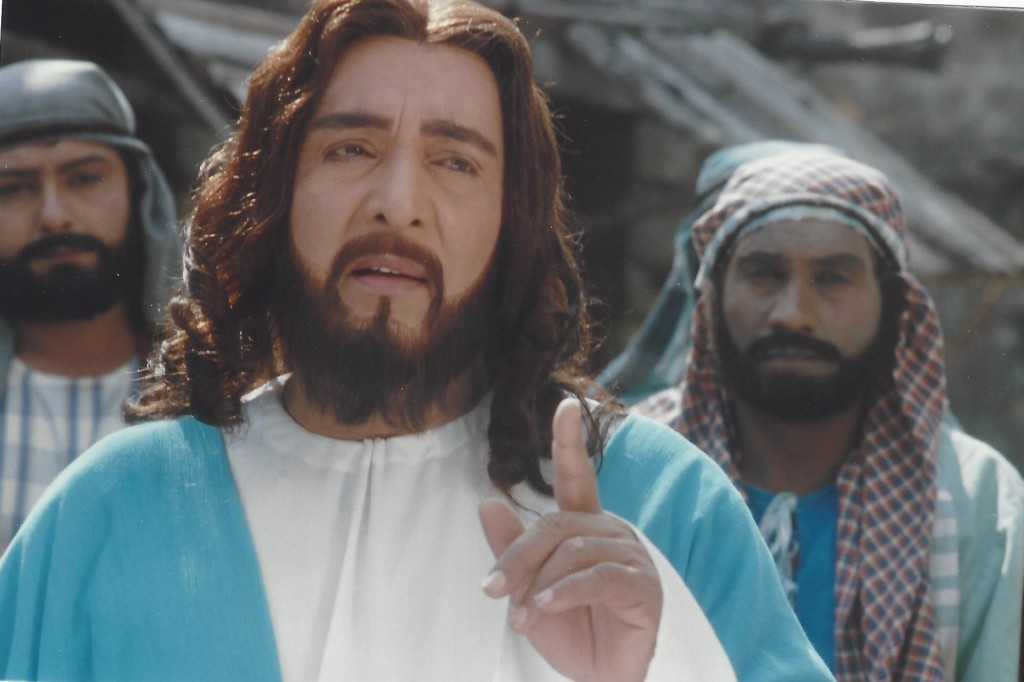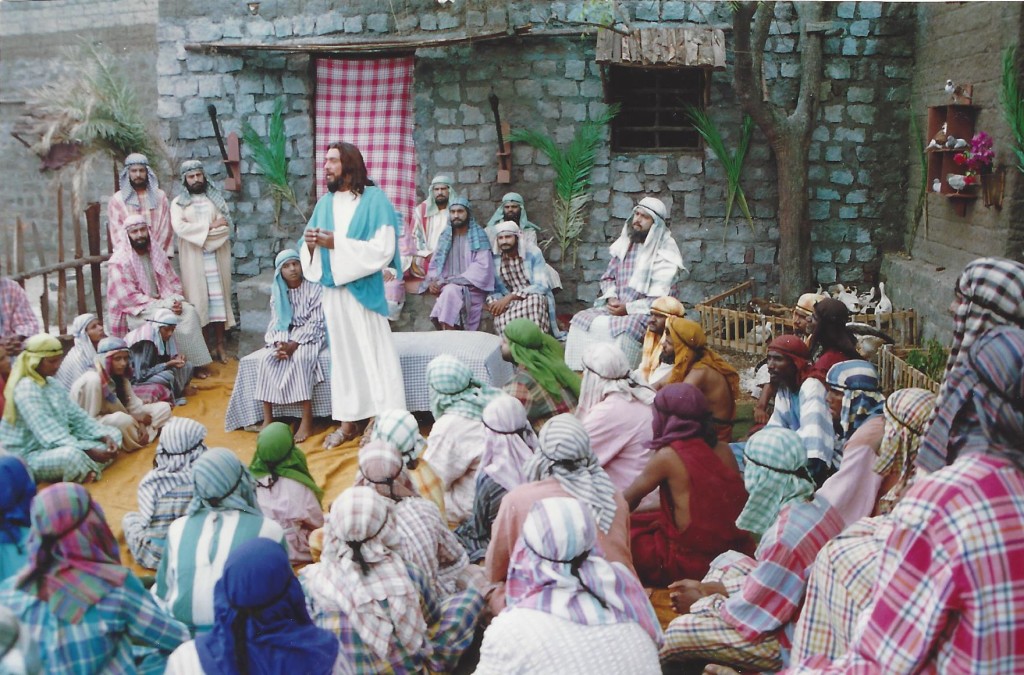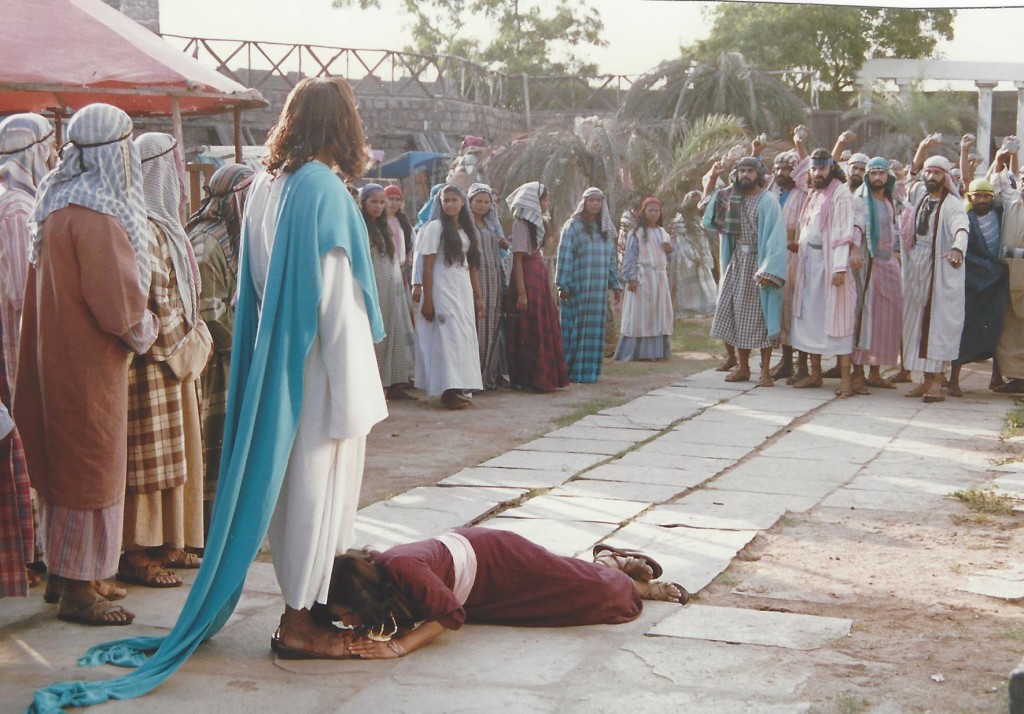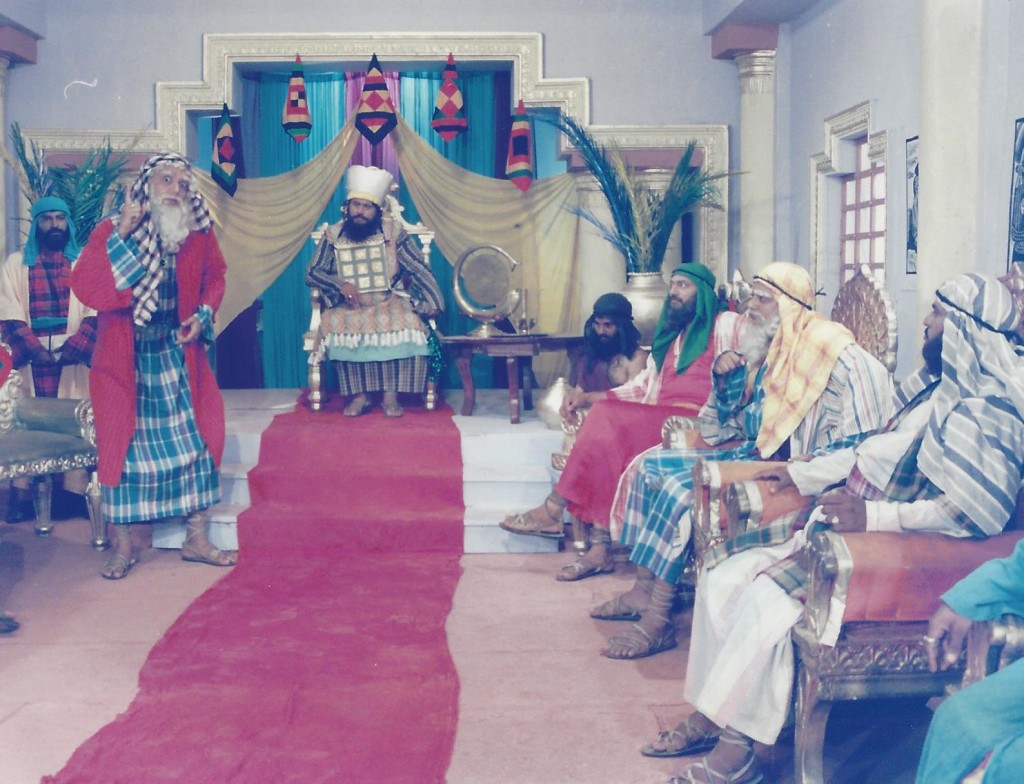Karunamayudu, a full-length film on the life of Christ, featured in cinemas in many States of India. When its Telugu, Tamil and Hindi versions were launched in 1978, they caused a sensation. I am happy to have helped the project get off the ground.
To understand the importance of film at the time, it is good to realise that many people, especially villagers were still illiterate. And those who could read and write had little time or money to buy newspapers or books. Radio was becoming more popular though distribution was limited. Only a small proportion of the population owned their own radio set. TV was only just on the horizon. In such a media-starved environment, film served as the major entertainer and educator. Film’s vivid moving images and gripping storytelling enchanted the masses.
In the year 1967, for instance, the Government of India granted public exhibition rights to hundreds of films produced in Hollywood and elsewhere. At the same time India itself produced 333 full-length feature films and 826 shorter films in the fifteen major vernacular languages of the nation. A booming film industry had started in Calicut, Mumbai and Chennai. After the United States, India had become the second largest film producing country in the world, with Telugu film releases almost topping the list.
I must also mention that the classic Indian film followed a unique style. Fast and furious action alternated with leisurely dialogues and comic interludes. Also, at seven or eight turning points of the story, the drama would be interrupted to introduce a song that expressed the mood of that moment. When a child is born, for instance, the mother or father may erupt in song to echo their hopes for the child. A song in the middle of a violent fight between two brothers might reflect on the sad reality of conflict in families. As elsewhere in the world, the professional quality between films varied considerably, but Indian films almost without exception managed to involve audiences in heart-rending emotions.

T.Vijayachander acted the part of Christ in Karunamayudu and the TV sequel Daya Sagar
“Show yourself among us!”
It began, if I recall well, in 1975. Two Hindu film producers from Chennai, then called Madras, turned up at our Amruthavani office. They introduced themselves as A.S.Raju and M.V. Reddy of Janatha Art Theatres. They told me that they wanted to produce a film on the life of Christ in Telugu. “We have done research”, they said. “Jesus Christ ranks high among religious leaders people love – whether they are Christian, Muslim or Hindu. But we need help. We heard that you do this kind of thing so we flew in from Madras this morning.”
The help they needed was both a start-up capital and information on Jesus’ actual life. I immediately grasped the potential. A good film on Jesus Christ would prove of immense value. And, if we joined in the venture as financial sponsors, we could insist on a correct portrayal of Jesus, rather than accepting the soft-spoken miracle worker popular in Hindu literature.
Now at the time we were absolutely strapped of cash. Amruthavani was in the process of being built. Also, I did not have enough information about the two gentlemen. They could well be impostors, conmen. So I decided to give a positive response, while playing it safe. I needed to check things out. Moreover, I had to make sure that we would get financial backing from some of the mission agencies.
“Gentlemen”, I said. “I congratulate you with your project. We too believe that a film on the life of Christ in Telugu would be very successful. In principle, we are happy to become your partners in this venture. But, obviously, we have to work out the terms of our working together in detail.”
They agreed.
I entertained them for the rest of the day and told them I would visit their offices in Chennai.
To give the project flesh, I decided to write a storyline, a basis for the eventual script. I had seen many Telugu films by that time and somehow understood the way they worked. In my ten-page original concept script, I gave an outline of how the life of Christ could be recounted in film language. In particular, I designed the text and visuals for the opening song of the film which – I am proud to say – were fully retained in the final production.
In the opening scene I visualised a blind beggar walking on the shores of the Sea of Galilee. Everywhere he hears of poverty and illness among villagers, violence by Roman soldiers and oppression by their tax collectors. While he mournfully sings about this in stanza after stanza, we see such human suffering in action. And he keeps repeating this plea: “God on high, where are you in our world? Don’t you care about what happens to your children? If only you knew, you would come down from your throne and show yourself among us!”
At the end of the song, as the blind man stumbles on a stretch of beach along the Sea of Galilee, we see in the distance a group of men walking towards us. It is Jesus himself surrounded by his early apostles. We focus on Jesus’ face . . . “You would come down and show yourself among us”.

Jesus staying for some days with the Samaritans in Sychar
Setting the ball rolling
I also travelled to Chennai. I stayed with the retired Catholic film director Joseph Thaliath. He had directed in Kerala two well-known Malayalam films with a Christian message: Mallika and Payal, both in 1957. But he was extremely negative about the film industry. He warned me: “In the Indian film-producing world, everyone is corrupt. Money reigns supreme. You can’t trust anyone. Your partners will cheat you and steal from you all the time. Even film stars cannot be relied upon. Once the shots for the film have been half completed, a top star may decide to take another job and so may not turn up for days or even weeks, leaving you with all the extra costs of the wasted film sets and extra wages for the crew. The star knows you cannot sack her because that would ruin the parts already filmed . . .” His words were prophetic, as events would prove.
I found that Janatha Art Theatres had produced films before. We made a tentative agreement, suggesting the title of the film as Raraju Kristhu, Christ King of Kings, fixing our contribution as Rs 400,000 (if I remember well) and making sure that we, on our side, would have final control over the script and the direction of the film.
On my way back to Chennai airport, I was tellingly reminded of the fact that we were working with truly Hindu producers. We passed a big temple complex. I asked what temple it was.
“Ah!”, Raju told me. “This is the Hanuman temple”. Hanuman is the monkey god famous in Hindu mythology as the ally who helped Rama fight the evil demon Ravana in Sri Lanka to liberate Sita, Rama’s wife. She had been abducted by Ravana.
“Hanuman is a really powerful god”, Raju continued. “If you are in trouble, or if you need anything badly, Hanuman will help you. I have experienced this myself.”
On my return to Hyderabad I started the process of applying for funds from donor agencies. Meanwhile developing the project on our side was taken over by Fr Balaguer, Amruthavani’s Director General, and Fr Raymond, our capable Executive Director.
The extremely gifted Fr Christopher Coelho OFM wrote the full film script and became the film’s director. He was assisted in this by Brother Hubert de By MHM, Amruthavani’s head of the visual media department. The necessary money was obtained. New agreements were signed. Towards the end of 1976 the production started in Chennai.

The pharisees threw the woman caught in adultery before Jesus’ feet
Disaster and success
The rest of the story I did not witness personally as I had been whisked off to London as Vicar General of the Mill Hill Missionaries. I followed events from a distance.
Joseph Thaliath’s prediction materialised. After the production had begun, it suddenly became clear that A.S. Raju and M.V.Reddy had used the start-up capital to finance another film, which they hoped would bring in a fortune. The film flopped. And, as a consequence, the production of Raraju Kristhu collapsed by lack of funds.
Fortunately, Frs Balanguer and Raymond managed to save the project.
To make a long story short, the two film producers of Raraju Kristhu were taken to court and landed in prison. The donor agencies were informed of what had happened and were pacified. For legal reasons the project was re-started under another name: Karunamâyudu [= “The Merciful One”]. A new producer was contracted: the Radha Chitra production company. Other financial sponsors were found. Fortunately, the film scenes shot during the earlier production could be saved. Re-shooting started with the same film script and employing the original cast of actors and film crew.
Karunamâyudu was released on 21 December 1978. It was 2 hours and 45 minutes long. Its popularity and impact were soon felt all over Andhra Pradesh. You should know that cinemas usually ran films only for two consecutive weeks. Whenever a film attracted crowds for 100 consecutive days in the same cinema, it was hailed as a triumph. Well, in 1979 Karunamâyudu was exhibited for 100 days in as many as seven commercial theatres and in some even for 250 days. People would keep arriving in buses specially hired to bring in crowds from surrounding villages.
The Malayalam version of the film was released already in December 1978, and the Tamil version in 1979. The Hindi version soon followed, and in subsequent years productions in 4 other Indian languages. Many dioceses acquired mobile film units so that the film could be taken round to rural areas and projected for village communities in their own village squares. The international film rights were obtained by Dayspring International which distributed copies of the film in other Asian countries: Nepal, Bangladesh, Pakistan, Sri Lanka, Singapore, Mauritius and Bhutan.
It is difficult to estimate the millions upon millions of people who saw the production and who, by all accounts, were inspired by this life of Jesus Christ.

In the Sanhedrin, Annas (standing) accuses Jesus of blasphemy. Caiaphas presides.
Daya Sagar
The enormous success of Karunamâyudu also awoke the interest of top players in the Indian television production which was emerging during those years. On the 7th of February 1996, under joint cooperation of Dayspring International and Amruthavani, Daya Sagar [= ‘Ocean of Mercy’ in Hindi] was launched, a TV serial on the life of Christ. It consisted of 52 episodes which were dubbed in Hindi, Telugu, Tamil and Malayalam. The film got accepted for showing on Doordarshan, the Indian national TV channel, by the diplomatic skills of Fr. Raymond.
The rough scripts for the episodes were written by Fr Raymond, worked out in detail by Guntur Yesupadham for Telugu and Bhimsen Nirmal for Hindi. A studio was purpose built in Hyderabad, with special film sets for the production. The TV serial too turned out to be a success. From 1 February 1997 it was broadcast on TV Channel DD-1 on every Saturday from 9.00 to 10.00 am.
THE STORY OF MY LIFE
- » FOREWORD
- » Part One. LEARNING TO SURVIVE
- » origins
- » into gaping jaws
- » from the pincers of death
- » my father
- » my mother
- » my rules for survival
- » Part Two. SUBMIT TO CLERICAL DOGMA — OR THINK FOR MYSELF?
- » seeking love
- » learning to think
- » what kind of priest?
- » training for battle
- » clash of minds
- » lessons on the way to India
- » Part Three (1). INDIA - building 'church'
- » St John's Seminary Hyderabad
- » Andhra Pradesh
- » Jyotirmai – spreading light
- » Indian Liturgy
- » Sisters' Formation in Jeevan Jyothi
- » Helping the poor
- » Part Three (2). INDIA – creating media
- » Amruthavani
- » Background to the Gospels
- » Storytelling
- » Bible translation
- » Film on Christ: Karunamayudu
- » The illustrated life of Christ
- » Part Three (3). INDIA - redeeming 'body'
- » spotting the octopus
- » the challenge
- » screwed up sex guru
- » finding God in a partner?
- » my code for sex and love
- » Part Four. MILL HILL SOCIETY
- » My job at Mill Hill
- » The future of missionary societies
- » Recruitment and Formation
- » Returned Missionaries
- » Brothers and Associates
- » Part Five. HOUSETOP LONDON
- » Planning my work
- » Teaching teaching
- » Pakistan
- » Biblical Spirituality
- » Searching God in our modern world
- » ARK2 Christian Television
- » Part Five (2) New Religious Movements
- » Sects & Cults
- » Wisdom from the East?
- » Masters of Deception
- » Part Five (3). VIDEO COURSES
- » Faith formation through video
- » Our Spirituality Courses
- » Walking on Water
- » My Galilee My People
- » Together in My Name
- » I Have No Favourites
- » How to Make Sense of God
- » Part Six (1). RESIGNATION
- » Publicity
- » Preamble
- » Reaction in India
- » Mill Hill responses
- » The Vatican
- » Part 6 (2). JACKIE
- » childhood
- » youth and studies
- » finding God
- » Mission in India
- » Housetop apostolate
- » poetry
- » our marriage
